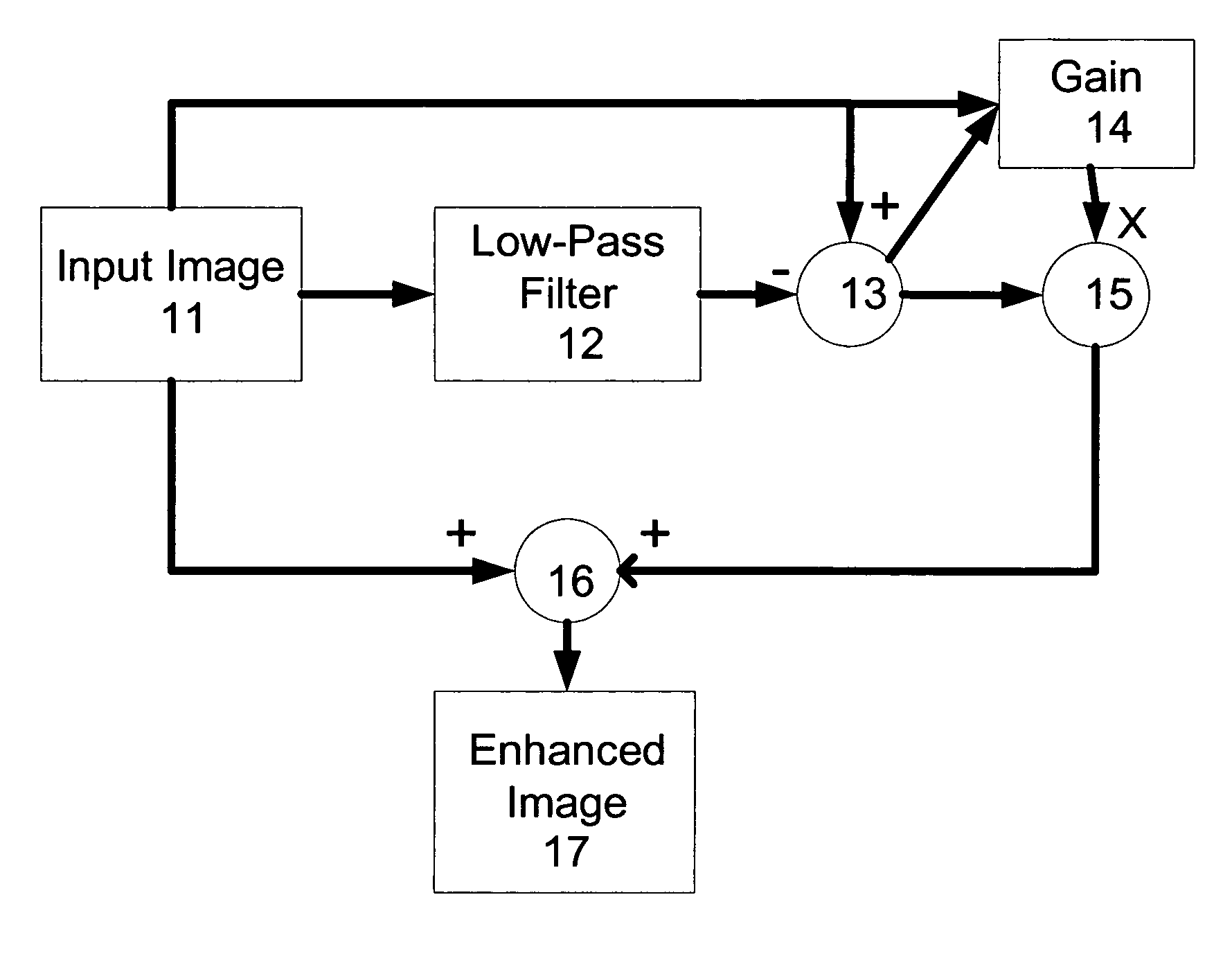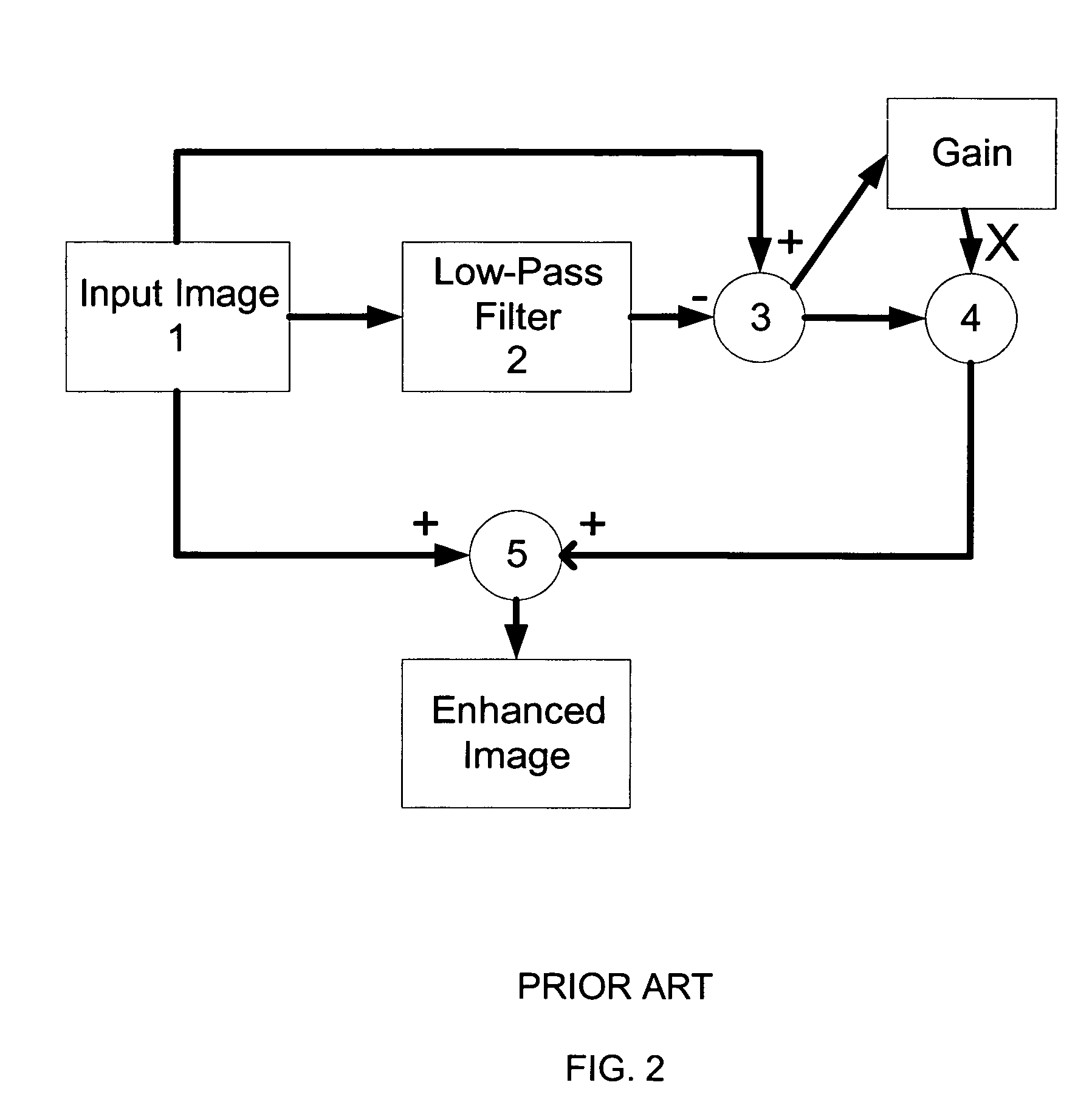Method and apparatus for adjusting the contrast of an image
a technology of contrast adjustment and image, applied in image data processing, television systems, instruments, etc., can solve the problems of large gain, excessive or poor lighting conditions, ringing or over/under shooting effects around the edges or other regions of high contrast, etc., to achieve good adaptation of delay coefficient, good results, and high contrast
- Summary
- Abstract
- Description
- Claims
- Application Information
AI Technical Summary
Benefits of technology
Problems solved by technology
Method used
Image
Examples
Embodiment Construction
[0047]Referring to FIG. 3, which shows schematically an overview of an example of a method according to the present invention, an original input image 11 is filtered by a low pass filter 12 which effectively removes the sharp or high frequency component of the input image 11 to leave an unsharp or low frequency image. This unsharp image is subtracted from the original image 11 in a summer 13, which therefore outputs the high frequency component. The high frequency component is multiplied with a gain factor obtained from a gain calculator 14 in an amplifier 15. The amplified high frequency component of the image is then added back to the original input image 11 in a second summer 16, which outputs the enhanced image 17. The gain that is provided by the gain calculator 14 is varied in the preferred embodiment, as will be discussed further below.
[0048]In adaptive contrast enhancement, mathematically the enhanced or output image y(m,n) is obtained from the input image x(m,n) as:
y(m,n)=μ...
PUM
 Login to View More
Login to View More Abstract
Description
Claims
Application Information
 Login to View More
Login to View More - R&D
- Intellectual Property
- Life Sciences
- Materials
- Tech Scout
- Unparalleled Data Quality
- Higher Quality Content
- 60% Fewer Hallucinations
Browse by: Latest US Patents, China's latest patents, Technical Efficacy Thesaurus, Application Domain, Technology Topic, Popular Technical Reports.
© 2025 PatSnap. All rights reserved.Legal|Privacy policy|Modern Slavery Act Transparency Statement|Sitemap|About US| Contact US: help@patsnap.com



